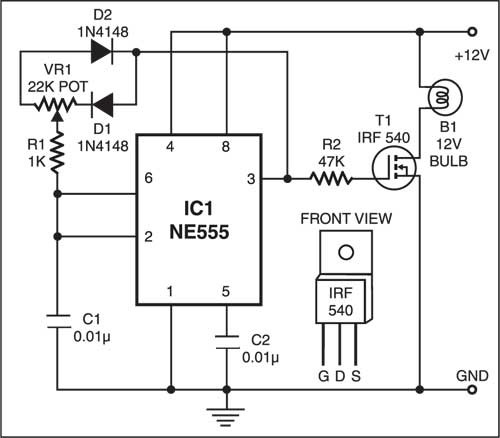 A reading light inside the car greatly assists passengers during night, but often the interior dome lamp is too bright and distracting to the driver. Dimmers are devices used to lower the brightness of said light. By changing the voltage waveform applied to the lamp, it is possible to lower the intensity of the light output. Here is a dome lamp dimmer that gives you a fairly linear control over the lamp brightness from low to high intensity while consuming little power.
A reading light inside the car greatly assists passengers during night, but often the interior dome lamp is too bright and distracting to the driver. Dimmers are devices used to lower the brightness of said light. By changing the voltage waveform applied to the lamp, it is possible to lower the intensity of the light output. Here is a dome lamp dimmer that gives you a fairly linear control over the lamp brightness from low to high intensity while consuming little power.
Since it is a pulse width modulated chopper circuit, you can also use it to dim a halogen bulb or control the speed of a mini drill, etc. A linear regulator such as a rheostat can be used to control the brightness of the dome lamp but it consumes a lot of power. A variable resistor would dissipate power as heat and acts as a voltage divider. The rheostat allows for the circuit to be big enough to handle easily.
Lamp dimmer circuit
Fig: Lamp Dimmer Circuit
In the circuit, timer NE555 (IC1) is wired as an astable multivibrator to produce square wave at its output pin 3. The output of timer IC1 charges/ discharges capacitor C1 via diodes D1 and D2. Adjust potmeter VR1 to control the RC time constant during the charge-discharge cycle and get the timer output with the desired pulse width. Thus the brightness of lamp B1 can be varied from low to high by adjusting potmeter VR1.
Most cars run only one wire to power the lamp and use the car body for the return current path. Connect ground path of the circuit to the car body. Use a suitable heat sink for the MOSFET to handle the load current.
The article was first published in June 2004 and has recently been updated.








